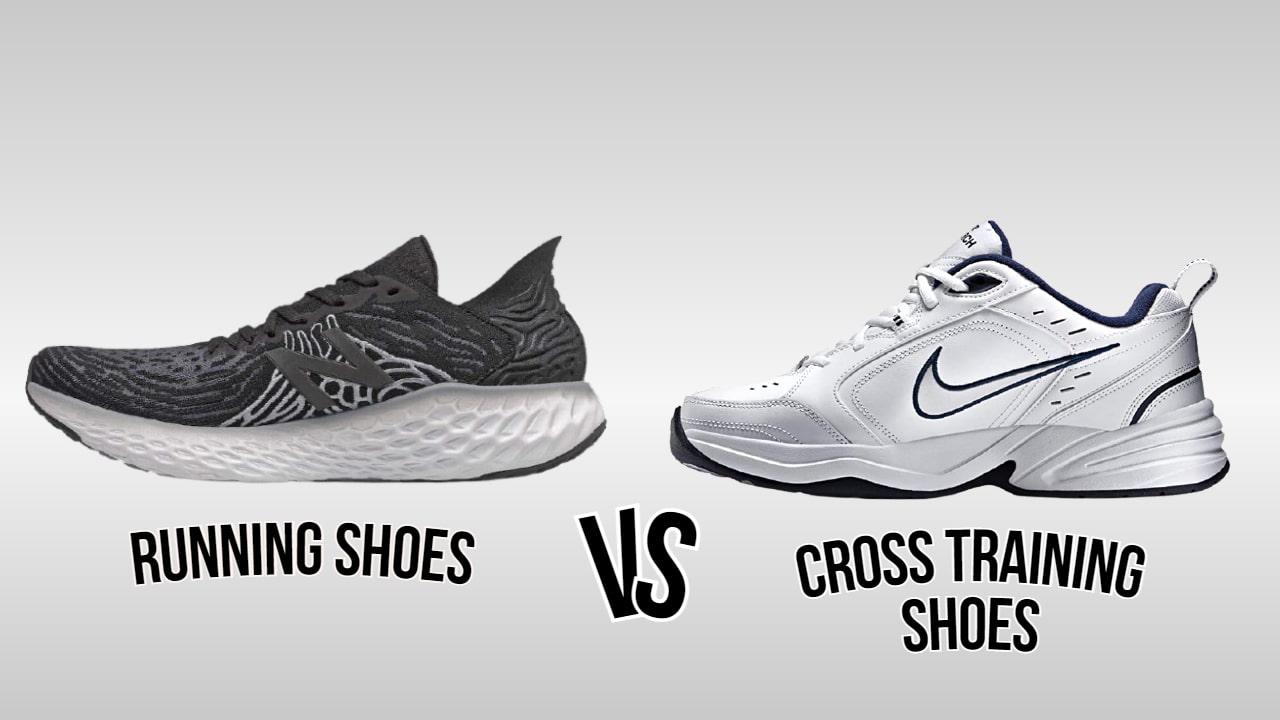If you are a new exerciser, you may be wondering what footwear is right for you. The choices are endless! Should you get cross-training shoes? Running shoes? Both? Today, We’ll explain the differences between running shoes vs cross trainers. And, describe when which shoe type should be worn. This can definitely help you in getting new pairs.
Difference Between Running shoes and Cross trainers :
The main difference between running shoes and cross-training shoes is the heel. Fall and flexibility of the sole. Although they look similar, each shoe is designed to do something completely different.
Running shoes are designed for toe-to-toe movements and typically have a higher heel drop. whereas, Cross trainers are designed for multidirectional movement and a greater range of motion.
Running Shoes
Whenever you are running, The body has to bear 3x more weight than normal. It is a high-impact activity and most of the leg muscles involved. That’s why running shoes are typically very light in weight.
In general, We take 6k – 8k steps in a half-hour run. A little extra ounce adds up to extra pounds very quickly. If you are a regular runner, these few pounds can lead to any injury like ITBS, Plantar Fascitis, Ball of foot pain.
Running shoes are made with forwarding movement in mind. So, runners should wear special shoes designed and built for running if they want to be comfortable. They have enough support and cushioning, and stay stable while running.
Besides light in weight and stability, Running shoes have a smooth profile as traction is not a problem for runners. Running shoes vs cross trainers, one thing is very common that the heat while running is much more than performing cross-training at the gym.
The designer and manufacturer of the running shoes keep an eye on the mesh material. So, It’ll be able to bear heat come from a treadmill or road or any other surface where you run.
After all, The right fit is as important as other features, there is no point investing in a pair of shoes if they are not the right size. However, look at our guide on how to make big shoes fit Smaller. (these methods only work if the shoe is big by an inch or two max). Having the right size becomes more vital if you are a long-distance runner.
Cross runners
They are designed for multidirectional movement and a greater range of motion, They have a flatter sole than running shoes making them more flexible. They are all-purpose shoes that can be used in a variety of activities. It can be stylish casual daily wear, fashionable shoe, or at the gym for weight lifting.
In comparison to running shoes, they are not designed to absorb shocks on your heels. cross-training shoes have more cushioning in the forefoot area and protect you when you land on your toes.
They’re firmer, which makes them better for weight training and exercise. Compared to running shoes, the soles of cross trainers are wider and tend to expand beyond the width of the top of the shoe.
Using running shoes for cross-training:
you can cross-train with running shoes, but it could be a risk for you. For example, lifting weights compresses your running shoes, which could make you unstable. Likewise, running shoes are designed to move from heel to toe, not sideways. ) Be a little slow. After all, if you wear your running shoes for cross-training, they will wear out faster and you won’t be able to get the most out of your 500 miles of running.
Should I buy two different shoes If I run and cross-train too?
Unfortunately, the answer is yes, which you probably don’t want to hear, especially if you are on a tight budget. My mom always said it was important to wear items the way they were designed. That advice sounds true here. If you want to be a fast runner, you need a good pair of running shoes.
If you want to be boss at cross-training, you need heavier shoes that are designed for lateral movement that you won’t find in any running shoe. Even if your budget doesn’t thank you but your body will.
